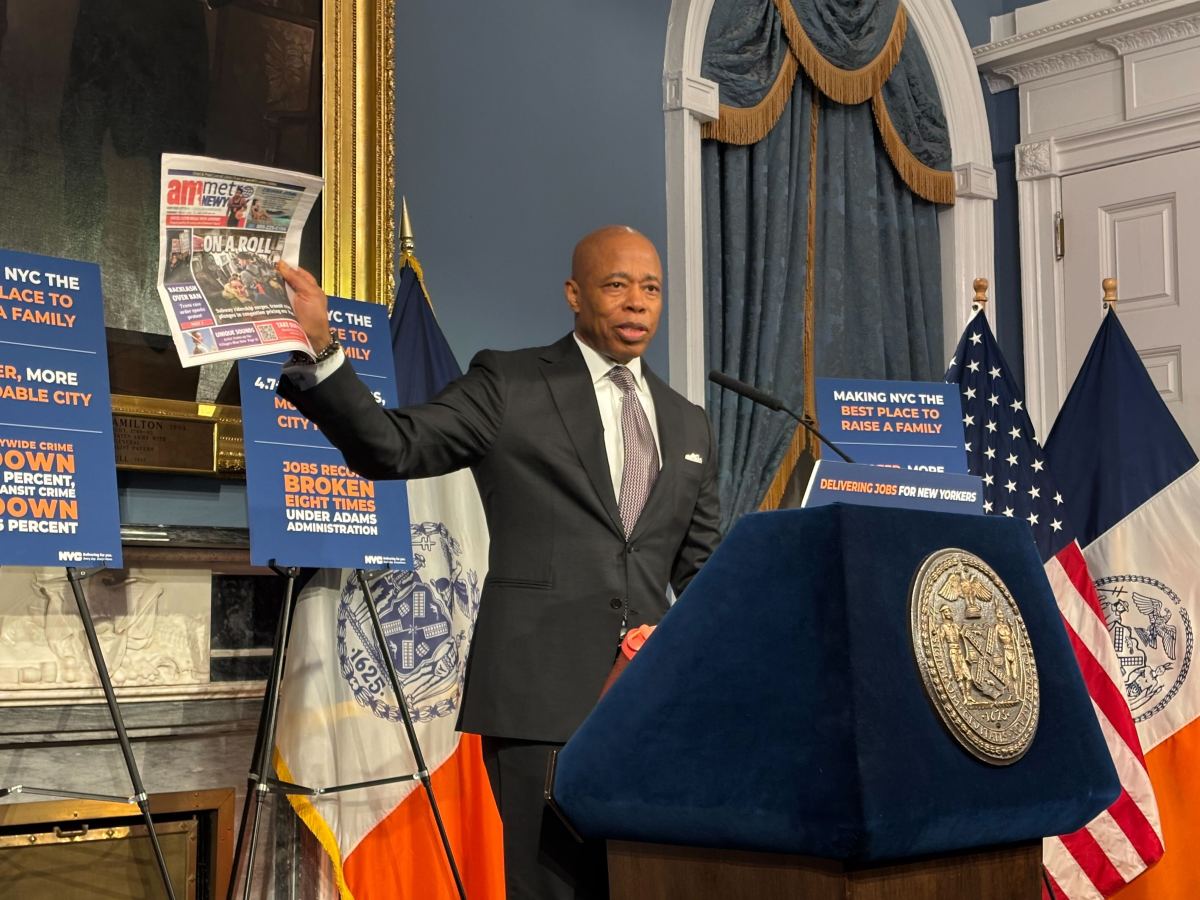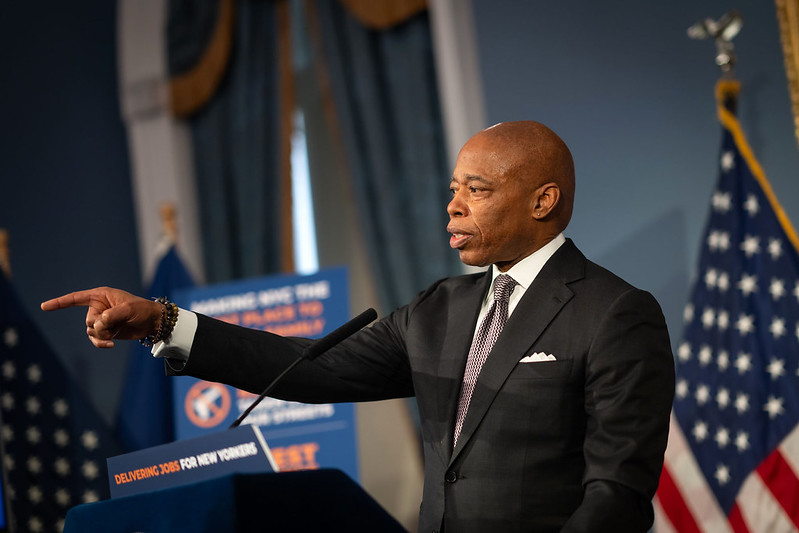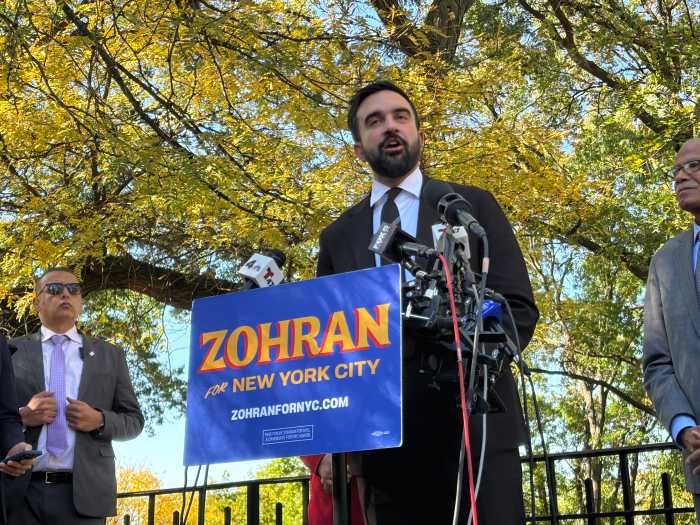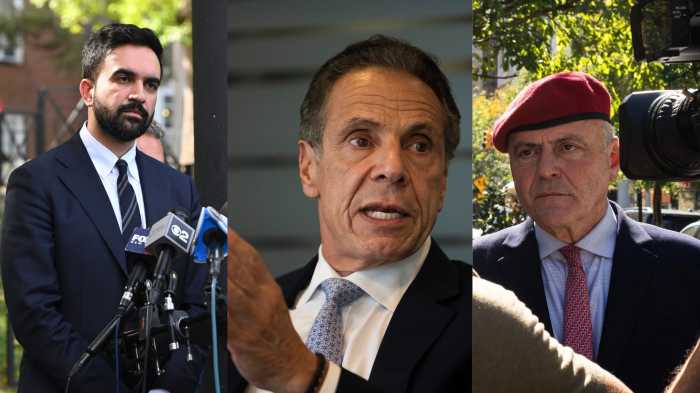Following several days of mystery, Mayor Eric Adams finally revealed some details on Wednesday about why he stepped away from the public eye for much of last week.
Adams, during his first weekly news conference since late last month, said he experienced a “real pain in my side” that prompted him to drop his public schedule as he underwent a “series of tests.”
But the mayor said that all of the tests “came out negative.”
“Thank God…to some people’s dismay, I’m gonna be around for a long time,” he said.
The mayor also appeared to say that one of the tests he had last week involved him undergoing anesthesia, which his spokesperson Kayla Mamelak-Altus later revealed was a colonoscopy.
“The week that I decided to go off, I was feeling real pain in my side, and I didn’t know what it was,” Adams said. “The doctor said, ‘Eric, I want you to take a series of tests.’ And I decided to do that.”
Adams said he told his son, Jordan Coleman, about the tests and that he would have to “go under” for one of them — referring to the anesthesia.
Timeline tweak

However, although the mayor appeared to say the procedure he went under anesthesia for was last week, Mamelak-Altus later clarified that he misspoke.
She said the mayor had a colonoscopy on Jan. 3 after experiencing pain in his side, which is when he underwent anesthesia.
Mamelak-Altus said that once Adams got the colonoscopy results back, his doctor ordered him to undergo more medical tests and take it easy. That prompted Adams’ chief spokesperson, Deputy Mayor of Communications Fabien Levy, to post on X on the evening of Sunday, Jan. 26, that the mayor would have a reduced public schedule that week because he was “not feeling his best.”
Last week, he underwent an MRI, bloodwork, and a test to detect helicobacter pylori, a bacteria known to cause stomach ulcers, according to Mamelak Altus.
Before City Hall clarified the mayor’s comments, they raised questions about whether he properly transferred his power while under anesthesia. Adams said he designated authorities to his first deputy mayor, but Public Advocate Jumaane Williams suggested Wednesday that maneuver violated the City Charter, which mandates that the public advocate fill in as acting mayor under such a circumstance.
“Given the new disclosure of the mayor’s time under anesthesia last week, and his office’s failure to inform the public advocate of that fact at the time, it seems clear that this was a violation of the charter,” Williams said. “Failing to communicate in this case is irresponsible at best and deceptive at worst.”
The City Charter clearly states that the public advocate is the next in the line of succession and must take over if the mayor is temporarily unable to “discharge the powers and duties” of their office by “reason of sickness or otherwise.” Under the city’s governing document, the mayor can grant certain powers to their deputies that the public advocate is not able to take away.
Executive Order 45
During his news conference Wednesday, Adams insisted that his office did “everything we were required to do” while he was under anesthesia. He cited Executive Order 45, which he said granted the powers of the mayor to First Deputy Mayor Maria Torres-Springer for a short period of time.
“My executive order makes clear that if I can’t perform my duties, the FDM will perform my duties and have the powers,” Adams said.
Mamelak Altus argued that Adams was under anesthesia for such a short period of time that there were no responsibilities for him to take on during that period.
Williams said designating certain mayoral responsibilities to Torres-Springer during the procedure does not supersede the line of succession laid out in the charter.
“Designating certain authorities to the First Deputy Mayor does not constitute the due diligence of a responsible leader, and it does not replace the charter’s language on the continuity of government,” Williams said. “Failing to communicate in this case is irresponsible at best and deceptive at worst.”
Read More: https://www.amny.com/politics/








































